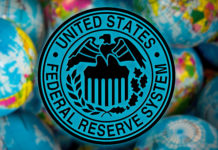Despite the pause consideration the case was weak – expect another hike of 25 in February.
The Reserve Bank Board considered three options in its deliberations at the December Board meeting. The options were: 50 basis point increase in the cash rate; 25 basis point increase; or no increase .
This contrasts with recent meetings when only the 50 basis point and 25 basis point options were considered.
Given consistent rhetoric from the Bank about pausing it would come as no surprise that the Board did consider the pause. Indeed, it came as a bigger surprise that 50 basis points was still on the table.
The case for pausing rested on the theme of placing “further emphasis on the lagged effects of a large policy adjustment to date, and the value in proceeding cautiously in an uncertain environment.”
But this argument seemed to be quickly dismissed, noting that the Bank’s forecasts in the November SOMP were that, despite further increases in interest rates (forecasts are based on market pricing and analysts forecasts), “inflation was expected to take several years to return to the target range.” Most importantly, since the forecasts were released in early November “incoming information had not warranted a reassessment of that broad outlook.”
It is also interesting that the Board noted that “members noted that no other central bank had yet paused.”
As with the October and November meetings, the case for 25 basis points over 50 basis points relied on the lags associated with policy: “There had already been a significant cumulative increase in interest rates and the full effects of this adjustment would take time to occur.”
The impact of the policy changes was also likely to be delayed more than normal due to the predominance of fixed rate mortgages savings buffers; and the strong reopening effect that may extend into the summer holidays.
It was also once again noted that there were benefits in acting consistently.
The argument for 50 basis points was quite robust – inflation is too high in an economy operating with excess demand; some other economies had seen wages pick up strongly, risking entrenched inflation; the inflation mind-set was shifting; wages growth potentially building; and the cash rate is not at a high level historically.
Members concluded that the range of options considered would continue to be discussed at future meetings.
In the final paragraph the Board chose, for the first time in any recent final paragraph, to strongly emphasise the dangers of inflation further than we have seen in the Minutes of earlier meetings, “High inflation damages the economy and makes life more difficult for people” and of course the Board repeats the wording in an earlier paragraph that “The Board expects to increase interest rates further over the period ahead, but it is not on a pre set path.” That final qualification is consistent with the signal that the Board will continue to consider the three options going forward.
Despite the fact that the Board considered the “pause” option, these Minutes do not paint a dovish picture of the Board.
Having discussed a pause on multiple occasions in recent RBA communications it would be surprising that the pause option was not raised at the meeting.
But the key is that the current forecasts which have rates rising further are still pointing to a number of years where the inflation rate is outside the range. So unless there has been a change in the data since those November forecasts were released, the Board needs to press on.
The monthly inflation print that came after the November meeting was lower than expected but mainly due to supply side effects and the Board noted that they “needed to be interpreted with caution” while key services inflation was only going to be reported later in the quarter.
The key issue for the RBA is around demand and wages growth. The fear is noted in the “50” discussion, “inflation mind set was shifting… wages growth potentially building.”
The Minutes point out a number of very recent developments on wages – “around 35% of firms in liaison had reported wage increases of greater than 5% in October and November”; “liaison reported that labour availability remained a key challenge, although there were tentative signs this had started to ease a little.”
Since the Board meeting the November employment report highlighted those prospects: 3.4% unemployment; 107,100 jobs being added in October and November; 0.2% fall in the underemployment rate; record high participation and employment-to-population ratio indicating very tight labour markets.
Tighter labour markets than expected even at the November Board and the November forecasts in the SOMP raise the risk to the Board that the scenario we have seen in other countries could repeat in Australia (see the case for “50”).
This risk will be even more of a concern if, as the Board notes, resilience to the slowdown through household savings buffers; high fixed rate exposure from mortgages; and an ongoing reopening effect reflect solid spending momentum in the early months of 2023.
Conclusion
Westpac expects the economy to slow through 2023 with “stagnation” in the second half but does see some momentum extending into 2023.
When the Board comes to consider its options at the next meeting in February it will have the December quarter Inflation Report but will also be observing data for the holiday period that may be holding up better than expected.
Based on the analysis in the Minutes, that will set the scene for hikes in both February and March (December quarter Wages Report available for the March meeting) while the May meeting will also be confronted with uncomfortably high inflation for the March quarter and a central bank that is observing tight labour markets and rising wages pressures.
A hike in May will be appropriate following other central banks, who will already be on hold, and the clear evidence of the economic damage builds – time to pause at the June meeting for the rest of the year.












